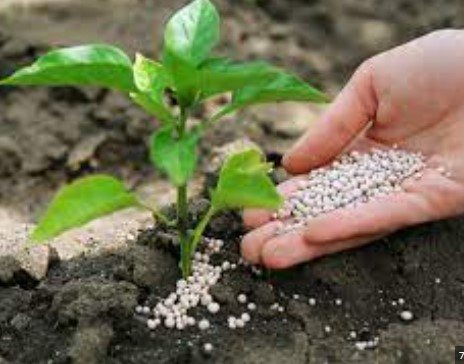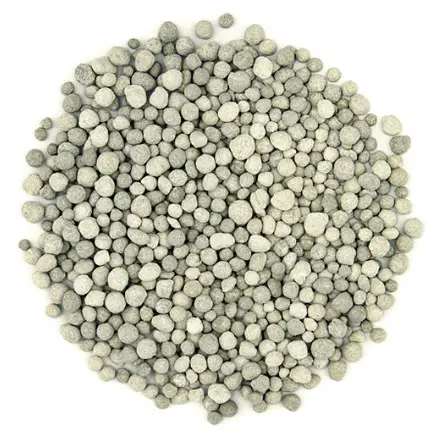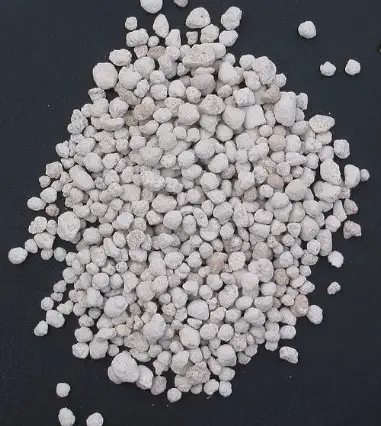Superphosphate fertilizers play a pivotal role in modern agriculture, offering a potent source of phosphorus to support the healthy growth of crops. These fertilizers, available in single, double, and triple superphosphate forms, cater to a wide range of soil types and agricultural needs, enhancing root development and flowering in plants. Their distinct characteristics and applications make understanding the differences between them crucial for effective farming practices.
The difference between single, double, and triple superphosphate lies primarily in their phosphorus content and production processes. Single superphosphate (SSP) contains 16-20% phosphorus, double superphosphate (DSP) around 35-40%, and triple superphosphate (TSP) boasts a phosphorus content of 44-52%. This variance affects their suitability for different agricultural purposes, impacting soil health and crop yield accordingly.
Each type of superphosphate has unique benefits and limitations, influenced by their chemical composition and nutrient content. While SSP is widely used for its soil amendment qualities, DSP and TSP offer higher concentrations of phosphorus, making them suitable for crops requiring substantial phosphorus inputs. Selecting the right type of superphosphate depends on specific crop needs, soil conditions, and environmental considerations, underscoring the importance of tailored agricultural practices.

Superphosphate Basics
Definition and Purpose
Superphosphate fertilizers are a primary source of phosphorus for plants. Their main purpose is to enhance root development and flowering. Phosphorus is a critical nutrient that supports the transfer of energy within plants, aiding in the transformation of sunlight into chemical energy during photosynthesis. This process is vital for plant growth and productivity.
Historical Context
The discovery of superphosphate marked a significant advancement in agricultural science. John Bennet Lawes, an English entrepreneur and agricultural scientist, patented the first superphosphate in 1842. He found that treating bones with sulfuric acid made the phosphorus they contained more soluble and available to plants. This innovation led to the first chemical fertilizer industry, transforming agricultural practices by significantly increasing crop yields and farming efficiency.
Key Differences
Chemical Composition
Single Superphosphate (SSP)
- SSP contains about 16-20% phosphorus.
- It is produced by treating rock phosphate with sulfuric acid.
- Besides phosphorus, it contains sulfur and calcium, beneficial for soil health.
Double Superphosphate (DSP)
- DSP has a higher phosphorus content, around 35-40%.
- It results from the reaction between rock phosphate and phosphoric acid.
- DSP is more concentrated, lacking the additional nutrients found in SSP.
Triple Superphosphate (TSP)
- TSP boasts the highest phosphorus content, 44-52%.
- Its production involves a more refined process with phosphoric acid, yielding a product rich in phosphorus.
- TSP is almost exclusively phosphorus, making it ideal for soils deficient in this nutrient.
Production Process
SSP Manufacturing
- Grinding rock phosphate to a fine powder.
- Mixing the powder with sulfuric acid to release phosphorus.
- Curing the mixture for several weeks, allowing it to chemically react and stabilize.
DSP Manufacturing
- Reacting rock phosphate with phosphoric acid in a controlled setting.
- Filtering out the solid waste, leaving a more concentrated phosphate solution.
- Granulating the liquid to form a solid, usable fertilizer.
TSP Manufacturing
- Similar to DSP but with higher concentrations of phosphoric acid.
- Further refinement and purification to increase phosphorus content.
- Granulation into a highly concentrated phosphorus fertilizer.
Nutrient Content
Phosphorus Percentage
- SSP: 16-20%
- DSP: 35-40%
- TSP: 44-52%
Each type of superphosphate offers different levels of phosphorus, making them suitable for various agricultural needs and soil conditions.
Additional Nutrients
- SSP also delivers sulfur and calcium, enhancing soil structure and fertility.
- DSP and TSP are more focused on providing phosphorus, with fewer additional nutrients.
Application and Use
Crop Suitability
- SSP is suitable for a broad range of crops, especially those requiring sulfur and calcium.
- DSP and TSP are preferred for crops with high phosphorus needs, like fruits and flowers.
Soil Conditions
- The choice of superphosphate depends on soil tests, which reveal nutrient deficiencies.
- SSP is often used on neutral or alkaline soils, while DSP and TSP are better for acidic soils needing a phosphorus boost.
Environmental Impact
Runoff Concerns
- Excess phosphorus from fertilizers can run off into water bodies, leading to eutrophication.
- Responsible application, based on soil testing, is crucial to minimize this risk.
Soil Health
- While superphosphates improve crop yields, long-term use must be managed carefully.
- Balancing fertilizer application with organic matter can maintain soil health and productivity.

Benefits and Limitations
The use of superphosphate fertilizers comes with a spectrum of benefits and limitations. Understanding these can help farmers and gardeners make informed decisions, optimizing their use for sustainable agriculture.
SSP Advantages
Cost-effectiveness
Single Superphosphate (SSP) is known for its affordability. It’s one of the most economical sources of phosphorus for plants, making it a popular choice for a wide range of agricultural settings. Its cost-effectiveness stems from the straightforward manufacturing process and the widespread availability of the raw materials required for its production.
Soil Amendment Qualities
SSP not only provides essential phosphorus but also improves soil quality. It introduces sulfur and calcium, two nutrients that are beneficial for soil health. Sulfur helps in chlorophyll formation and protein synthesis in plants, while calcium is crucial for cellular structure and function. These additional nutrients make SSP an excellent soil amendment, contributing to better soil structure and fertility.
DSP Benefits
Higher Phosphorus Content
Double Superphosphate (DSP) offers a significant advantage with its higher phosphorus content compared to SSP. This makes DSP an ideal choice for soils that are severely deficient in phosphorus or for crops that have high phosphorus requirements. The concentrated phosphorus in DSP supports rapid root development and blooming in plants, leading to increased yields and better crop quality.
Reduced Heavy Metal Presence
The manufacturing process of DSP involves purer forms of phosphate rock and more refined production techniques, which typically result in a product with lower levels of heavy metals. This is particularly important in reducing the risk of heavy metal accumulation in the soil, which can be detrimental to both plant health and human consumption.
TSP Pros
Maximum Phosphorus Boost
Triple Superphosphate (TSP) provides the maximum phosphorus boost among the three types of superphosphates. With its high phosphorus content, TSP is especially beneficial for initiating strong root systems in young plants and supporting the nutritional needs of rapidly growing crops. Its effectiveness is most noticeable in phosphorus-poor soils, where it can significantly improve plant growth and productivity.
Efficiency in Application
Given its high concentration of phosphorus, TSP requires less product to be applied to the field to achieve the desired nutritional effect, making it more efficient in application. This efficiency can reduce labor and application costs, a key consideration for large-scale agricultural operations.
Common Limitations
Potential for Overuse
One of the major limitations of superphosphate fertilizers is the potential for overuse. Applying too much fertilizer can lead to phosphorus runoff, contaminating water bodies and causing environmental problems like eutrophication. Overuse can also lead to nutrient imbalances in the soil, potentially harming plant health.
Environmental Considerations
The environmental impact of superphosphate production and use is a growing concern. The extraction of phosphate rock and the manufacturing process of superphosphate fertilizers can be energy-intensive and contribute to greenhouse gas emissions. Furthermore, the mismanagement of these fertilizers can lead to soil degradation and water pollution, emphasizing the need for responsible use.
Choosing the Right Superphosphate
Selecting the appropriate type of superphosphate fertilizer depends on several factors, including the specific needs of the crop, soil conditions, and environmental considerations.
Factors to Consider
- Soil Test Results: Understanding the soil’s current nutrient levels is crucial. Soil tests can help identify phosphorus deficiencies and determine the most suitable type of superphosphate.
- Crop Requirements: Different crops have varying nutritional needs. Consider the crop’s lifecycle and phosphorus requirements when choosing a fertilizer.
- Environmental Impact: Opt for superphosphate types and application methods that minimize environmental risks, such as water pollution and greenhouse gas emissions.
- Cost and Availability: Evaluate the cost-effectiveness and availability of the fertilizer types in your region.
Farmer and Gardener Perspectives
From the perspective of farmers and gardeners, the choice of superphosphate is often a balance between optimizing crop yield and promoting sustainable agricultural practices. They must consider:
- Economic Viability: The cost of fertilizer relative to the expected increase in crop yield.
- Long-term Soil Health: Using fertilizers that support sustainable soil fertility and minimize negative environmental impacts.
- Adaptability: The ability to choose and switch between different types of superphosphate based on changing soil conditions and crop needs.

Frequently Asked Questions
What is Superphosphate?
Superphosphate is a group of fertilizers providing a rich source of phosphorus to plants. It is produced by treating rock phosphate with sulfuric acid (for SSP) or phosphoric acid (for DSP and TSP), enhancing its availability to plants. This fertilizer is key to improving root development and boosting flowering in crops.
How Does Superphosphate Affect Soil Health?
Superphosphate improves soil health by supplying phosphorus, an essential nutrient for plant growth. It enhances root strength and flower production. However, overuse can lead to phosphorus runoff, potentially harming aquatic ecosystems. Thus, it’s vital to apply it judiciously, considering the specific needs of the soil and crops.
Can Superphosphate be Used on All Crops?
Superphosphate can be used on a wide range of crops, including vegetables, fruits, and grains, to promote healthy growth and high yields. However, the choice between SSP, DSP, and TSP should be based on the crop’s specific phosphorus needs and the existing soil conditions to avoid nutrient imbalances.
What are the Environmental Impacts of Superphosphate?
The environmental impacts of superphosphate include potential risks of phosphorus runoff into nearby water bodies, leading to eutrophication and harm to aquatic life. It’s essential to use superphosphate responsibly, ensuring that its application rates and timing minimize environmental risks while supporting agricultural productivity.
Conclusion
The journey through the differences between single, double, and triple superphosphate reveals a landscape rich with options for the discerning farmer or gardener. Each form of superphosphate holds a key to unlocking the potential of the soil, offering nutrients essential for the flourishing of crops. By selecting the appropriate type, growers can enhance soil health, boost crop yields, and contribute to sustainable farming practices.
In closing, understanding the unique attributes of each superphosphate type empowers agricultural professionals to make informed decisions, balancing crop needs with environmental stewardship. The choice between single, double, and triple superphosphate ultimately hinges on a comprehensive understanding of their characteristics, ensuring that the backbone of our food supply is nurtured responsibly and effectively.

